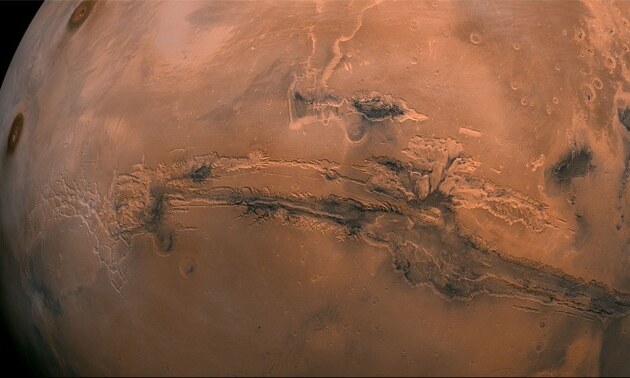
Scientists say Mars may have supported life at some point in its past
text_fieldsScientists believe that because Mars may have experienced dry and wet seasons in the past, it may have once been habitable. Analysis of the mud fracture patterns found on the early Martian surface by NASA's Curiosity Rover point to an irregular or episodic presence of water, which means water may have existed for a while before evaporating.
The process may have repeated until mud cracks formed, the scientists from France, US and Canada said in their study. "These exciting observations of mature mud cracks are allowing us to fill in some of the missing history of water on Mars. How did Mars go from a warm, wet planet to the cold, dry place we know today? "These mud cracks show us that transitional time when liquid water was less abundant but still active on the Martian surface," said Nina Lanza, principal investigator of the ChemCam instrument onboard the Curiosity Rover and one of this study's authors.
On Earth, mud cracks are known to assume a T-shape initially. However, subsequent wetting and drying cycles can cause these cracks to take more of a Y-shape. The Y-shape of the mud cracks on the Martian surface, therefore, could mean that the red planet saw wet-dry cycles, the scientists said in the study published in the journal Nature.
Further, these cracks were only a few centimetres deep, suggesting that these wet-dry cycles could have been seasonal or could have occurred more quickly, such as through flash floods, they said. These findings, thus, point to the possibility of Mars once having had Earth-like wet climate and that Mars may have been able to support life at some point.
"(The wet-dry cycles create) the perfect place for the formation of polymeric molecules required for life, including proteins and RNA, if the right organic molecules were present at this location," said Patrick Gasda, co-author of the paper. "Wet periods bring molecules together while dry periods drive reactions to form polymers. When these processes occur repeatedly at the same location, the chance increases that more complex molecules formed there," said Gasda.
"These features point to the existence of wet-dry environments that on Earth are extremely conducive to the development of organic molecules and potentially life. Taken as a whole, these results give us a clearer picture of Mars as a habitable world," said Lanza.
With PTI inputs






















